A winch is far more than a tool for off-roaders—it’s a powerhouse used across construction, marine, industrial, and recovery operations. Whether powered manually, electrically, hydraulically, or pneumatically, winches are designed to pull or lift with precision.
This guide breaks down each type of winch, highlighting where it performs best—from off-road recovery to industrial lifting—so you can confidently choose the right one.
Quick Answer
What Are the Types of Winches?
Winches are versatile devices used for pulling or lifting heavy loads. They come in various types, each suited for specific tasks:
- Electric Winches: Ideal for off-road recovery and workshops, powered by DC or AC electricity.
- Hydraulic winches: Built for heavy-duty applications like construction and marine towing, utilizing hydraulic fluid for power.
- Pneumatic winches: Safe for hazardous environments, powered by compressed air.
- Manual Winches: Simple hand-operated devices, perfect for light lifting in remote areas.
- Capstan Winches: Feature a vertical drum for horizontal pulling, widely used in maritime applications.
- Anchor Winches: Designed for anchoring ships, available in electric or hydraulic versions.
- Towing Winches: High-capacity winches used for towing vehicles or boats.
- Snubbing Winches: Common on small sailing vessels, using tail lines to adjust tension.
Each type of winch is designed to meet specific needs, from off-road adventures to industrial lifting and marine operations.
Understanding the various types of winches and their applications is crucial when selecting a suitable model.For real-world performance across all categories, explore our best winch by type and use case.
This guide will provide you with the knowledge to make an informed decision, whether you’re a weekend adventurer or a professional in need of a reliable winching solution.
To see the best models across different types, check out our best winches across different types.
Types Of Winches
The power source of a winch is a critical factor that defines its suitability for various applications.
Let’s delve into the details of different types of winches based on their power sources:
1. Electric Winches
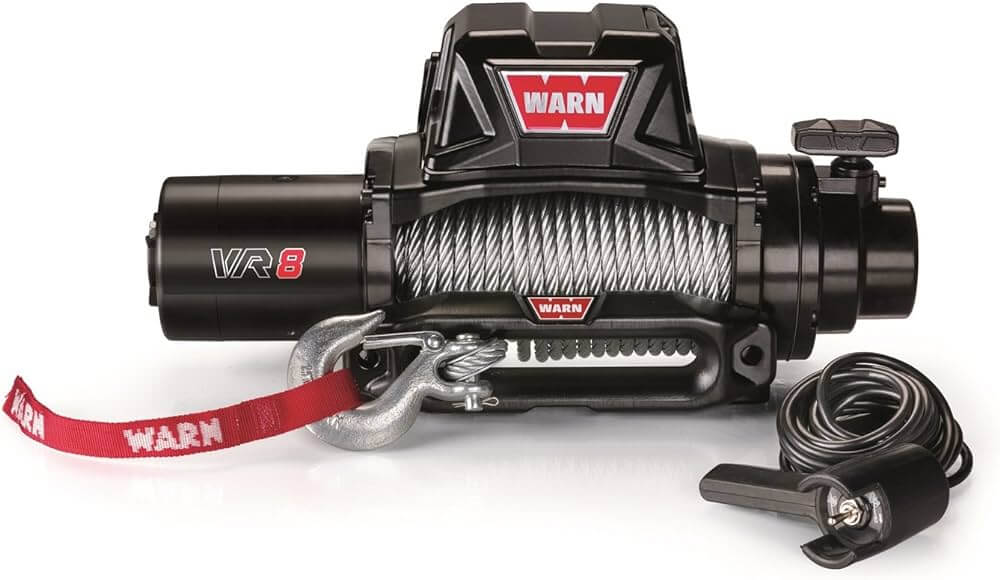
Electric winches are popular due to their ease of use and convenience. Electric winches are suitable for both stationary and mobile applications, with options like DC-powered winches for vehicles and AC-powered winches for industrial setups.
These winches typically feature a compact winch motor and a durable winch drum, making them ideal for tasks requiring precise rope handling and consistent power delivery. Rope capacity and load limit are important factors to consider when selecting an electric winch for industrial winch applications.
They offer consistent power and ease of use, making them ideal for off-road recovery and workshops.
Electric winches can be broadly categorized into two types based on their power source:
Direct Current (DC) and Alternating Current (AC).
DC Electric Winches
These winches are commonly used in mobile applications, such as off-road vehicles and trailers.
Their primary advantage lies in their portability and the ability to operate directly off a vehicle’s battery.
This feature makes them invaluable in remote off-road locations or emergency recovery operations where stationary power sources are unavailable.
However, their dependency on a vehicle’s battery means their usage is limited by the battery’s capacity and the winch’s power consumption.
AC Electric Winches
AC winches are designed for stationary applications, such as garages, workshops, or industrial settings. They are connected to a standard power outlet, providing them with a consistent and reliable power supply.
This makes them ideal for tasks that require prolonged winch operation without the worry of draining a battery.
The downside is their lack of portability, as they require proximity to an electrical outlet, limiting their use in remote or mobile applications.
2. Hydraulic Winches

Hydraulic winches are the powerhouses among winches, known for their high load capacity and endurance, making them suitable for heavy-duty applications. These winches excel in industries requiring sustained use and high performance.
With adjustable rope capacity and the ability to handle extreme load limits, they are essential for operations requiring precise control and efficiency.
Hydraulic winches are best for heavy-duty applications, such as towing ships, construction projects, and mining operations.
These winches operate on hydraulic fluid, providing unmatched power and precision even under continuous load.
Operation: These winches operate on fluid power, utilizing a hydraulic system to generate force.
This system ensures consistent and controlled power delivery, essential for tasks demanding precision and sustained operation, such as construction, heavy towing, and marine work.
Types: The two main types of hydraulic winches are open-center and closed-center systems.
Open-center systems are designed to work with hydraulic systems where the fluid continuously circulates through the pump, whether the winch is in operation or not.
Closed-center systems, in contrast, are used with hydraulic systems that provide flow only when needed.
The choice between open-center and closed-center systems depends on the existing hydraulic setup and the specific requirements of the task.
3. Pneumatic Winches
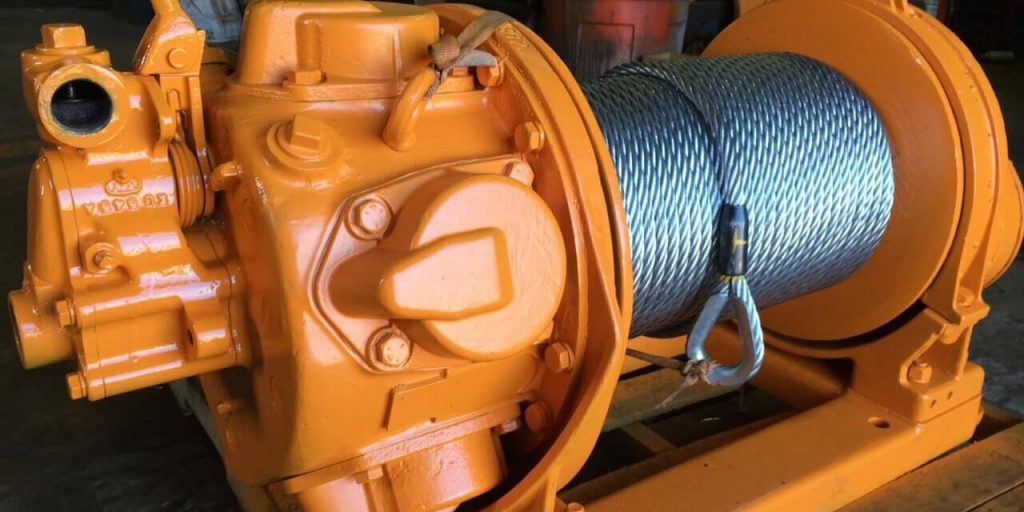
Pneumatic winches offer significant safety advantages, especially in environments where explosive or hazardous conditions exist. Powered by compressed air, these winches eliminate the risks associated with electrical sparks or hydraulic fluid leaks, making them an ideal choice for volatile atmospheres like oil rigs, chemical plants, and mining sites.
Equipped with a robust winch drum and versatile rope capacity, pneumatic winches provide reliable performance even under extreme conditions.
Their design ensures consistent operation while maintaining the highest safety standards, making them a key solution for industrial applications where safety and efficiency are critical.
Limitations: The performance of pneumatic winches is dependent on the availability and capacity of an air compressor.
This reliance can be a drawback in terms of mobility, as the need for an air compressor means additional equipment must be transported and set up.
Additionally, the overall efficiency and power of the winch are limited by the compressor’s performance.
4. Manual Winches
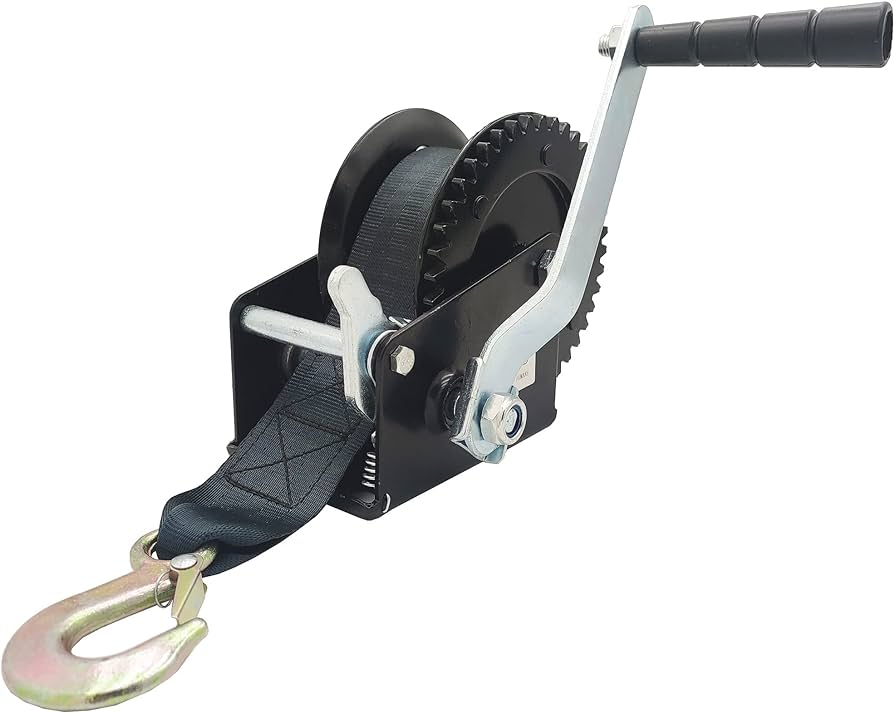
Manual winches, also known as hand winches, are prized for their simplicity and reliability, requiring no external power source. These hand-operated devices often feature compact winch drums, making them ideal for use in remote areas or situations where power is unavailable.
Commonly used for small boats, trailers, and light lifting tasks in agriculture or construction, manual winches are highly versatile.
While their rope capacity and load limits are lower than powered alternatives, they are perfect for small-scale lifting and pulling tasks where portability and ease of use are essential.
Types and Benefits: These winches are operated by hand, using mechanisms like gear winches or ratchet winches.
They are highly cost-effective and provide a level of self-reliance that is unmatched by powered winches.
Manual winches are particularly useful in applications where access to power is limited or non-existent, such as in remote outdoor settings or for small-scale operations.
Applications: Their applications range from small boats and trailers to simple lifting and pulling tasks in agriculture or construction.
The physical effort required to operate these winches is their primary limitation, making them less suitable for heavy or prolonged use.
Applications of Winch
Off-Road Winches
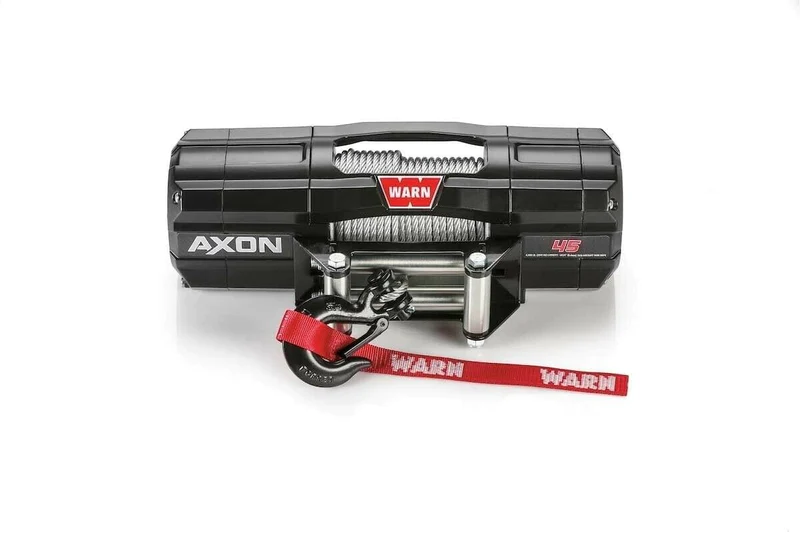
For off-road enthusiasts like us, winches are a lifeline. They are used for vehicle recovery, self-rescue, and navigating tough terrain.
Electric recovery winches and hydraulic winches with synthetic ropes are popular choices, offering the necessary power and durability.
Construction Winches

Industrial winches are widely used in construction, mining, and forestry to move heavy materials safely and efficiently. Applications include lifting equipment, rigging operations, and pulling large loads in challenging conditions.
Marine Winches
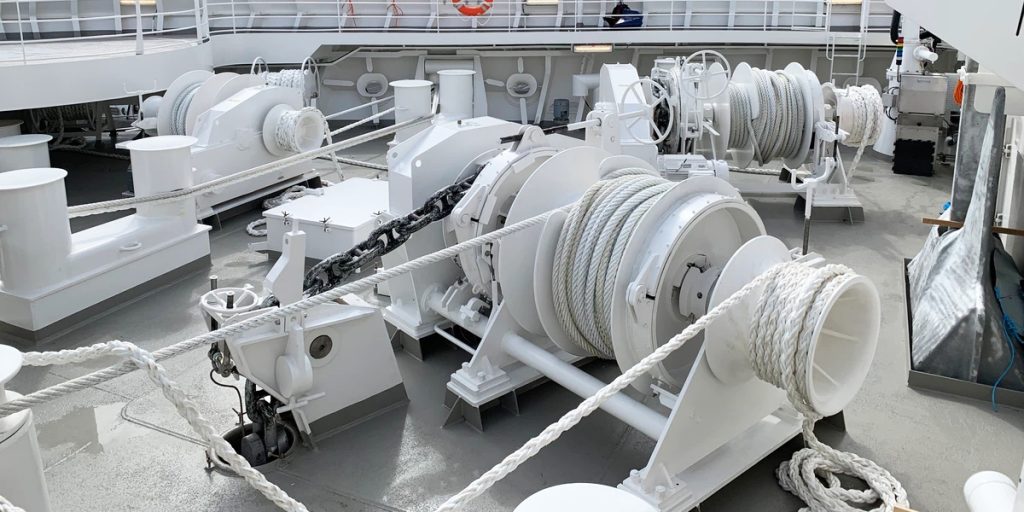
Marine winches, such as anchor and towing winches, are crucial for ship operations including docking, mooring, and hauling. These winches are specifically designed to withstand harsh marine environments and ensure reliable performance in maritime logistics.
Here’s a quick comparison of different winch types to help you choose the right one for your needs.
| Winch Type | Power Source | Best For | Key Feature |
|---|---|---|---|
| Electric Winches | DC/AC Power | Vehicle recovery, workshops | Consistent power, easy to use |
| Hydraulic Winches | Hydraulic Fluid | Heavy-duty, marine, towing | High capacity, continuous use |
| Pneumatic Winches | Compressed Air | Hazardous environments | Safe in explosive conditions |
| Manual Winches | Manual Effort | Light lifting, remote areas | Simple, reliable |
Underrepresented Types of Winches
Capstan Winches
Capstan winches have a vertical drum and are primarily used for horizontal pulling tasks. They are widely used in maritime applications, such as anchoring or mooring small vessels. Their design allows for the line to be released at any angle, offering flexibility in handling ropes and cables.
Anchor Winches
Anchor winches, also called windlasses, are specifically designed for ship anchoring. They are available in both electric and hydraulic versions to suit various operational needs. Anchor winches handle heavy anchor chains with precision and reliability, making them indispensable for maritime operations.
Towing Winches
Towing winches are heavy-duty devices used on ships and vehicles for towing operations. These winches feature high load capacities and steady pulling power, ensuring safe and efficient towing in maritime logistics and off-road vehicle recovery. They are commonly powered by electric or hydraulic systems.
Other Applications
Winches also find their place in forestry, mining, and stage rigging, showcasing their versatility across various sectors.
FAQs
What is the most powerful type of winch?
Hydraulic winches are considered the most powerful due to their ability to handle high load capacities and sustain long periods of operation, making them ideal for heavy-duty applications like towing and construction.
Which winch is best for off-road use?
Electric winches, particularly DC-powered models, are best for off-road recovery because they can operate directly from a vehicle’s battery, ensuring reliable performance in remote locations.
What is a capstan winch used for?
Capstan winches are primarily used for horizontal pulling tasks and are widely employed in maritime applications such as anchoring and mooring small vessels, thanks to their vertical drum design.
How do pneumatic winches ensure safety?
Pneumatic winches are powered by compressed air, eliminating the risks of electrical sparks or hydraulic fluid leaks. This makes them a safe choice for hazardous environments like oil rigs and chemical plants.
What factors should I consider when choosing a winch?
Key factors to consider include the type of power source (electric, hydraulic, or manual), rope capacity, load limit, intended application (off-road, marine, industrial), and environmental conditions.
Can manual winches be used for heavy loads?
Manual winches are best suited for light to medium loads due to their reliance on manual effort. For heavy loads, powered winches such as hydraulic or electric options are more appropriate.
Conclusion
With this knowledge, you are well-equipped to explore the diverse world of winches. Remember, the right winch is your trusty sidekick, helping you conquer challenges and live life to the fullest. Explore your options and confidently select the winch that meets your needs.
And hey, if you get stuck along the way, don’t worry. Just remember this guide and reach out for help. After all, that’s what communities are for, right?
Happy winching!

